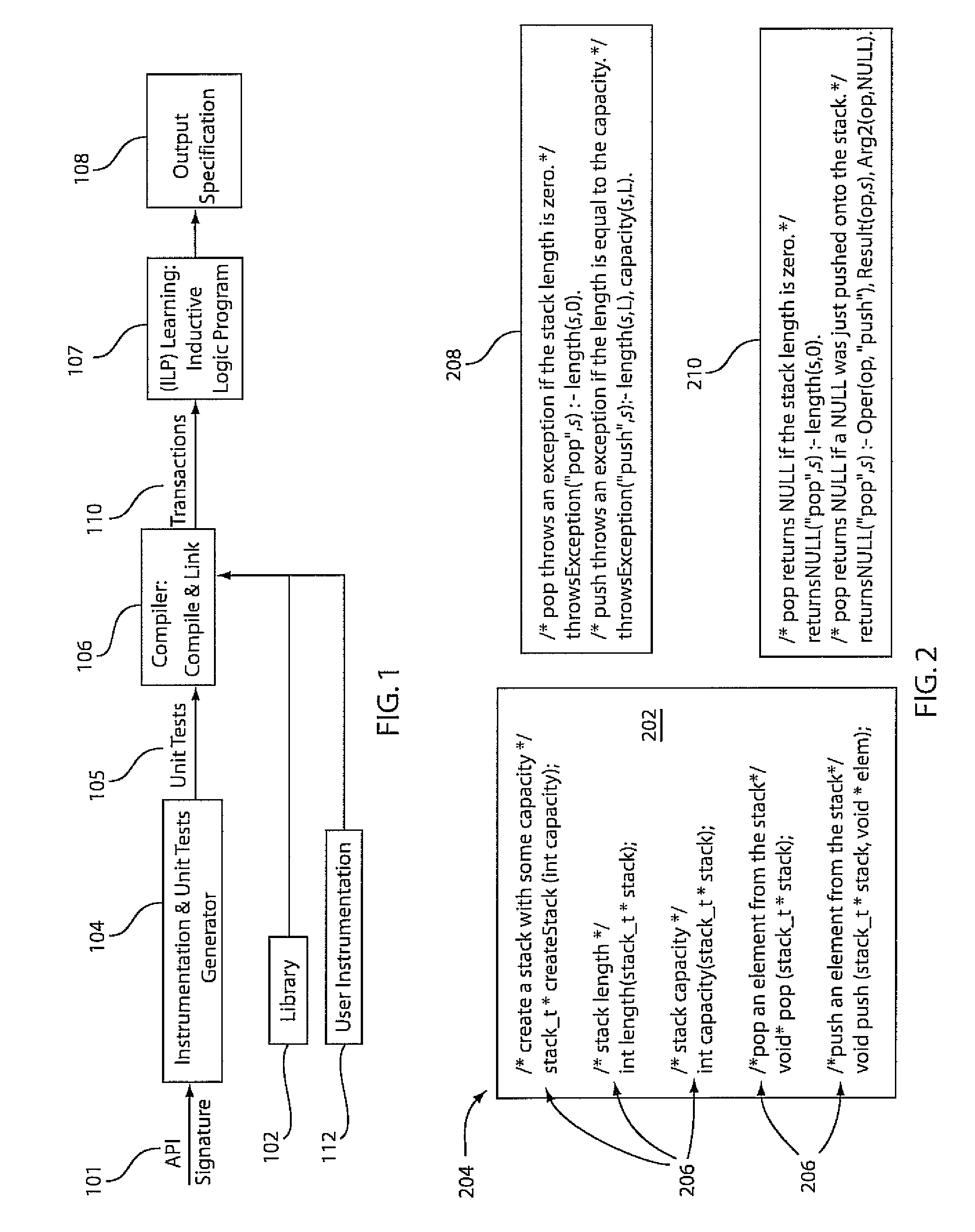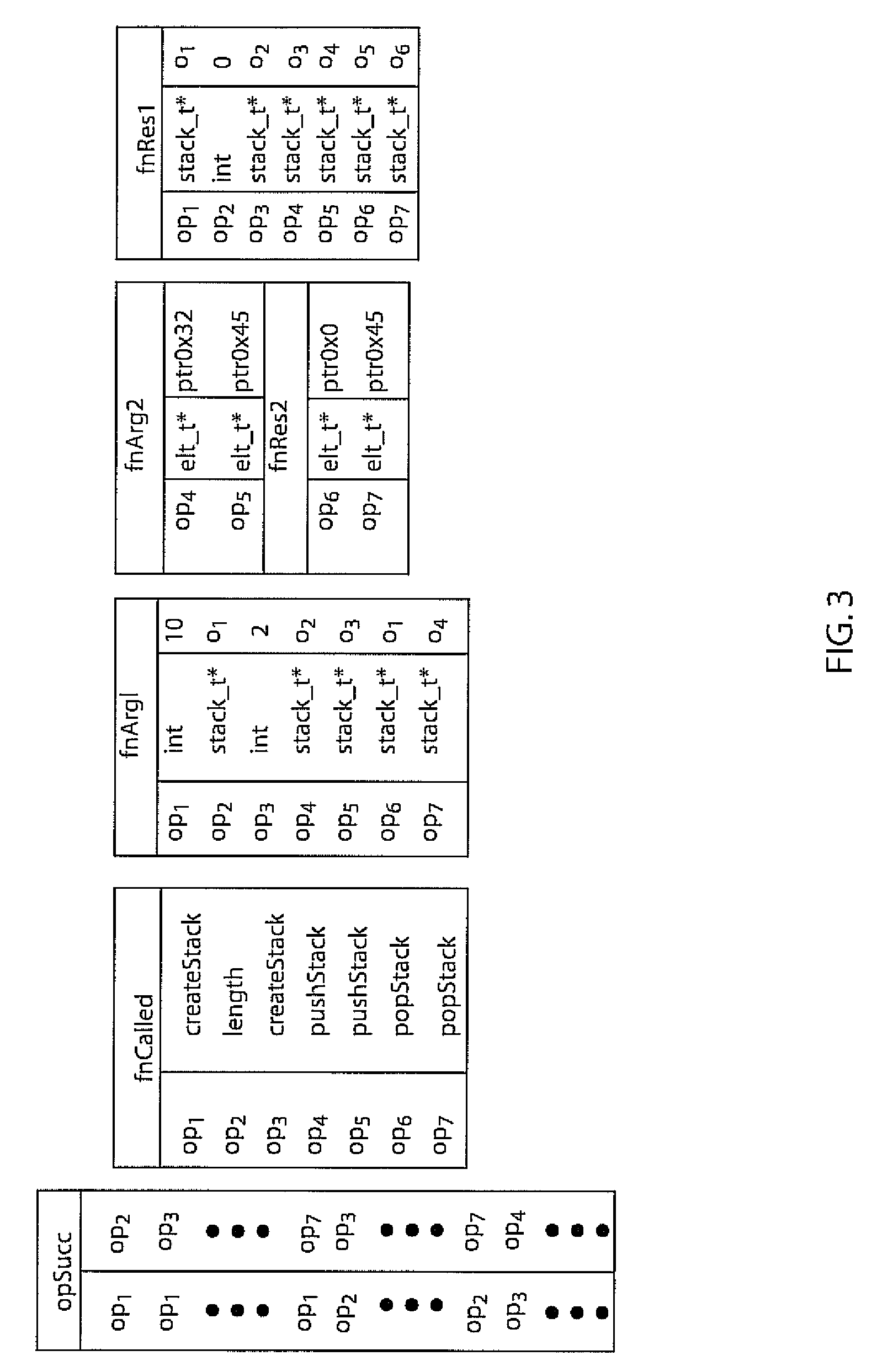Mining library specifications using inductive learning
a library specification and inductive learning technology, applied in the field of computer software, can solve the problems of complex API usage rules, unclear documentation, and inability to understand the behavior of the library in some corner cases, and achieve the effect of faulty or unpredictable program behavior
- Summary
- Abstract
- Description
- Claims
- Application Information
AI Technical Summary
Benefits of technology
Problems solved by technology
Method used
Image
Examples
example 1
[0034]Consider the domain of human population along with the standard notion of biological father and mother. We assume predicates such as mother(m, p) and father(f, p), denoting that m (f) is the (biological) mother (father) of p. It is possible to characterize the familiar concept of “grandfather” using the following datalog specification.[0035]grandfather(x, y):—father(x, z), mother(z, y).[0036]grandfather(x, y):—father(x, z), father(z, y).
Similarly the concept of a (biological) ancestor can be expressed using the following clauses:[0037]ancestor(x, y):—father(x, y).[0038]ancestor(x, y):—mother(x, y).[0039]ancestor(x, y):—ancestor(x, z), ancestor(z, y).
[0040]Declarative specifications can be used to capture useful behavioral properties of APIs such as permissible calling sequences, function call preconditions, predicting return values and so on. Before doing so, however, one needs to fix a first order language that describes APIs, the objects that they manipulate and the results,...
example 2
[0045]The function signatures for the functions in the stack API shown in FIG. 2 are as follows:[0046]stack_t*←create_stack(int)[0047]int←length(stack_t*)[0048]int←capacity(stack_t*)[0049]stack_t*←create_stack(int)[0050]stack_t*←push_stack(stack_t*+, elt_t)[0051](stack_t*, elt_t)←pop_stack(stack_t*+)[0052]void←free(stack_t*+)
[0053]A function signature L forms a query iff all its results are basic types while none of its arguments are destroyed. A query is assumed to return some attribute of the objects input to them. Similarly, functions that reclaim the memory allocated to compound objects are called destructors. These are assumed to destroy their compound arguments and return only basic types. Functions can also be labeled as allocators. Such functions accept basic types as inputs and produce a return value of a compound type. Many libraries permit allocators that take compound objects as inputs. In such libraries, there is a linear type hierarchy among types so that the inputs fo...
example 3
[0055]Returning to the stack interface in FIG. 2, we can define an interface signature with a type stack_t. The allocator for stack_t includes the singleton createStack, the query functions include length, capacity. The functions push and pop modify their stack argument. The function free is a destructor for objects of type stack_t.
[0056]Deriving Relations: As the basis of our framework, we show that a sequence of operations on a given interface can be described relationally. These relations will form the predicates that will be used to learn specifications. Given an API, a transaction O is a sequence of function calls to the interface functions along with their results:[0057]op1: (O1)←f1(I1)[0058]op2: (O2)←f2(I2)[0059]:[0060]opn: (On)←fn(In)
[0061]Each operation is of the form opj: (Oj)←fj(Ij) where opj is its operation ID, Oi denotes the tuple of objects output by the call to function fj, while Ij denotes the tuple of arguments to the function call. Every compound argument o to an ...
PUM
 Login to View More
Login to View More Abstract
Description
Claims
Application Information
 Login to View More
Login to View More - R&D
- Intellectual Property
- Life Sciences
- Materials
- Tech Scout
- Unparalleled Data Quality
- Higher Quality Content
- 60% Fewer Hallucinations
Browse by: Latest US Patents, China's latest patents, Technical Efficacy Thesaurus, Application Domain, Technology Topic, Popular Technical Reports.
© 2025 PatSnap. All rights reserved.Legal|Privacy policy|Modern Slavery Act Transparency Statement|Sitemap|About US| Contact US: help@patsnap.com



